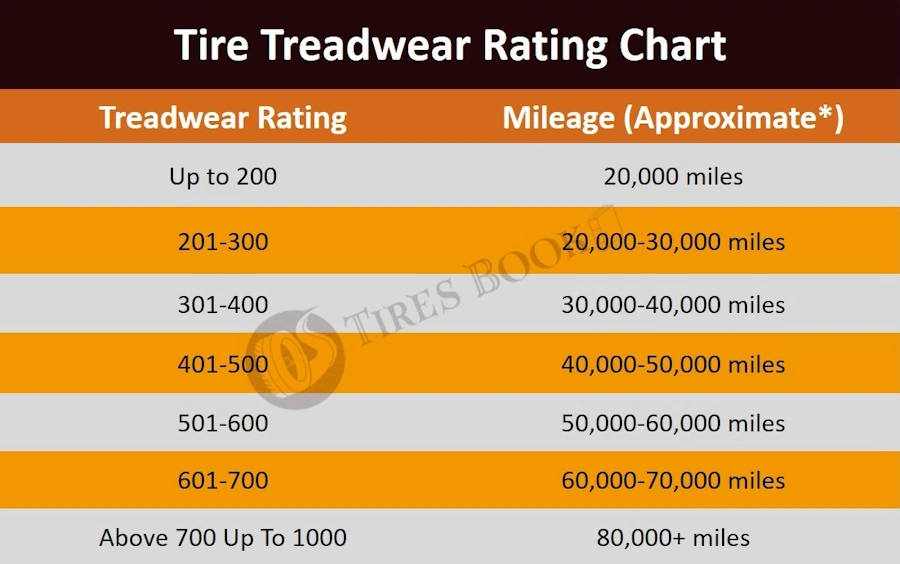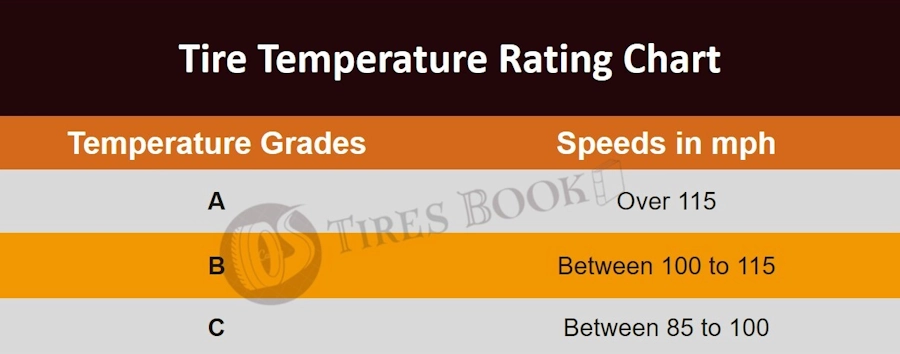What Is a Uniform Tire Quality Grade (UTQG) Standard?
The Uniform Tire Quality Grading (UTQG) system is a set of standards for car tires. Created by the National Highway Traffic Safety Administration (NHTSA) in 1978, it assesses a tire’s treadwear, temperature resistance, and traction.
Since March 31, 1979, all tires manufactured for sale in the U.S. must have UTQG ratings on their sidewall. This is a part of the DOT approval process. The UTQG helps consumers compare tires on a standardized basis. It excludes winter tires and certain light truck tires from grading.
Components of UTQG Rating
The Uniform Tire Quality Grading (UTQG) system includes three primary components:
1. Treadwear Rating
The UTQG treadwear rating is a three-digit number on the tire’s sidewall, indicating expected tread life. Higher numbers mean longer tread life. For example, a tire with a treadwear grade of 400 should last twice as long as one with a grade of 200. However, this is a relative measure. Actual tire performance varies due to driving style, climate, tire inflation, and vehicle weight.
Treadwear Rating Chart

2. Traction Rating
UTQG traction grades (AA, A, B, C) rate a tire’s ability to stop on wet pavement. This grading is visible on the tire sidewall. An AA grade signifies better stopping ability on wet pavements than a C grade. It’s important to note that UTQG traction tests focus only on straight-ahead braking, not cornering, acceleration, high-speed driving, or dry road performance.
Traction Rating Chart

3. Temperature Rating
The UTQG temperature grade indicates a tire’s ability to dissipate heat, a crucial factor as heat can damage tires over time. Graded as A, B, or C on the tire sidewall, all tires sold in the U.S. must have at least a C rating. Factors like underinflation, high-speed driving, overloaded vehicles, hot weather, and certain road conditions can produce excessive heat.
Temperature Rating Chart

How to Interpret UTQG Ratings?
Interpreting the Uniform Tire Quality Grading (UTQG) is quite straightforward. Let’s break it down with an example. Suppose a tire has a UTQG rating of 400 AA A.
- 400 indicates treadwear rating.
- AA indicates traction rating. This is the second part of the UTQG (indicated by letters AA, A, B, or C).
- A indicates temperature rating. This is the last part of UTQG and also a letter grade (A, B, or C).
So, a UTQG rating of 400 AA A suggests a tire with a reasonable lifespan, excellent wet-road braking (AA), and great heat resistance (A). This would be a high-quality tire for various driving conditions. Remember, these are comparative ratings, so they are best used to compare different tires rather than as absolute measures.
